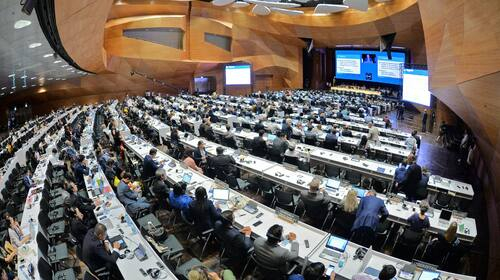

The 43rd session of the UNESCO World Heritage Committee concluded in Baku, capital of Azerbaijan on July 10. A total of 35 applications have been considered, 29 of which have been approved for inclusion in the world heritage list.
Among the 29 new world heritage sites added this year, there are 15 in Europe and North America, 10 in the Asia-pacific region, two in the Arab region and one each in Africa and Latin America and the Caribbean.
The newly listed projects are full of highlights, and all regions have made remarkable breakthroughs. In Asia, the archaeological ruins of Liangzhu City fill the gap in the world heritage list of early civilizations in East Asia. In Europe, the churches of the Pskov School of Architecture represents the beginning of Russian urban civilization, and the Jodrell Bank Observatory in the UK has been selected to fill a gap in the world heritage list concerning the development of science and technology. While in Africa, the inclusion of ancient ferrous metallurgy sites of Burkina Faso proves the level of prehistoric civilization in the region. Also new on the list is temple zone of Sambor Prei Kuk in Cambodia, and Korean Neo-Confucian Academies, which reflect the influence of Confucian civilization.
In this world heritage committee, Chinese elements are also a highlight. The Migratory Bird Sanctuaries along the Coast of Yellow Sea-Bohai Gulf of China (Phase I) and the Archaeological Ruins of Liangzhu City in China were approved at the session and listed as world heritage sites. So far, the total number of world heritage sites in China has reached 55, ranking first in the world.
Besides, the 44th session of the UNESCO World Heritage Committee will be hosted by Fuzhou, Fujian province of China next year, which undoubtedly shows the high recognition of China's contribution to the cause of heritage protection. Participants also expressed willingness to strengthen international cooperation with China in the protection and management of world heritage sites.
Some experts pointed out that, at present, the number of world heritage sites has reached 1,121, more and more people have consciously into the action of world heritage protection. However, the protection of world heritage sites is still faced with various challenges. Human activities, natural disasters, and climate change continue to pose threats, and the imbalance of heritage protection among countries and regions is still prominent.
Just as what Director-General of UNESCO, Audrey Azoulay, has said, world heritages mean more than just being on the list. The purpose of the inclusion is to arouse the state party's responsibility to protect and raise public awareness of participation.

Copyright © 2018 CGTN. Beijing ICP prepared NO.16065310-3
Copyright © 2018 CGTN. Beijing ICP prepared NO.16065310-3